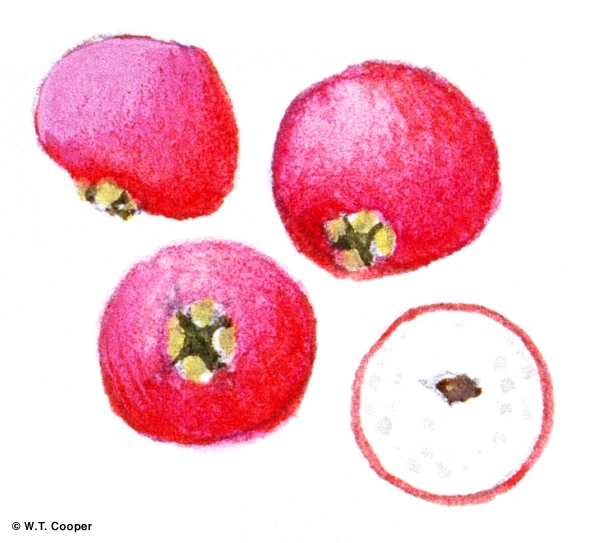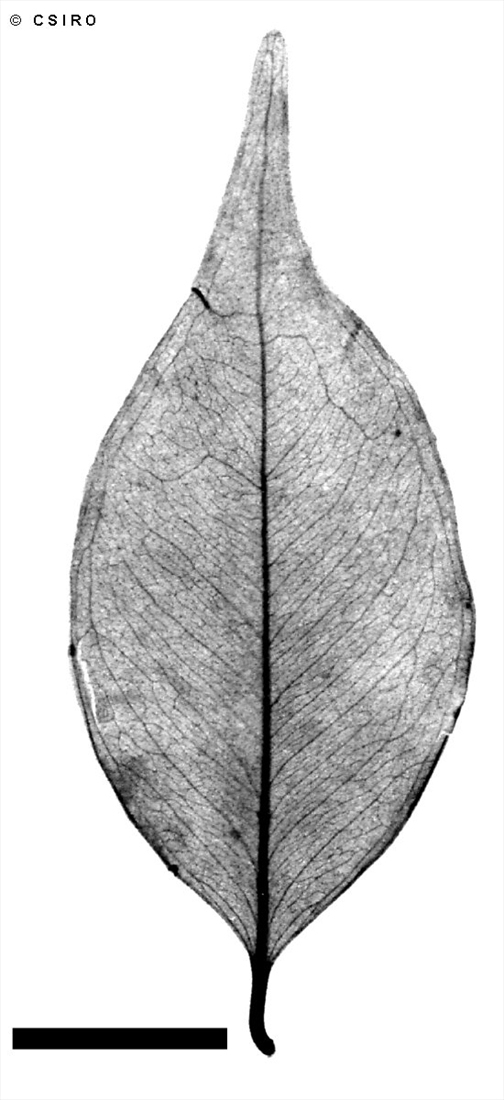Australian Tropical Rainforest Plants - Online edition
Syzygium luehmannii (F.Muell.) L.A.S.Johnson







Johnson, L.A.S. (1962) Contributions from the New South Wales National Herbarium 3(3): 99.
Bark generally reddish brown and conspicuously flaky, the flakes often large. A pale cream-pink layer generally visible under the subrhytidome layer before the first section of the outer blaze. Living bark layer rather thin.
Young leaves and shoots pink or reddish, the whole crown often similarly coloured. Leaf blades small, about 3-7 x 1-2.5 cm. Lateral veins scarcely visible on the upper surface of the leaf blade but more readily apparent on the underside. Leafy twigs glabrous.
Inflorescence terminal and in the upper axils, generally rather compact, hidden by the leaves, bracts deciduous, absent at anthesis. Flowers +/- sessile. Calyx tube (hypanthium) + about pedicel about 3-6 mm long, calyx tube (hypanthium) about 2-3 mm diam., calyx lobes rounded about 1-1.5 mm long. Petals +/- orbicular or oval, concave, about 1.5-2.5 mm diam., oil dots visible with difficulty, about 20-40 per petal. Outer staminal filaments about 4-6 mm long, anthers about 0.3-0.5 x 0.4 mm, gland terminal, on the back on the anther. Ovules about 10-12 per locule, placentas axile or central, ovules transverse +/- horizontal. Style about 5-9 mm long, approximating or exceeding the stamens.
Fruits globular, pyriform or turbinate, narrowly excavated at the apex, attaining about 7-11 mm diam., calyx lobes persistent, about 0.5-1 mm long, pericarp succulent. Seed solitary, about 2-5 mm diam., testa adhering slightly to the pericarp, but free from the uniformly textured cotyledons. Radicle basal or lateral. Cotyledons purple when fresh, cotyledonary stipules present.
A very popular tree in cultivation, it has a dense crown and produces beautiful flushes of new growth and small red fruits.
This species produces millable logs and the timber is marketed as Cherry Satinash, a useful general purpose structural timber. Wood specific gravity 0.70-0.82. Hyland (1983).





